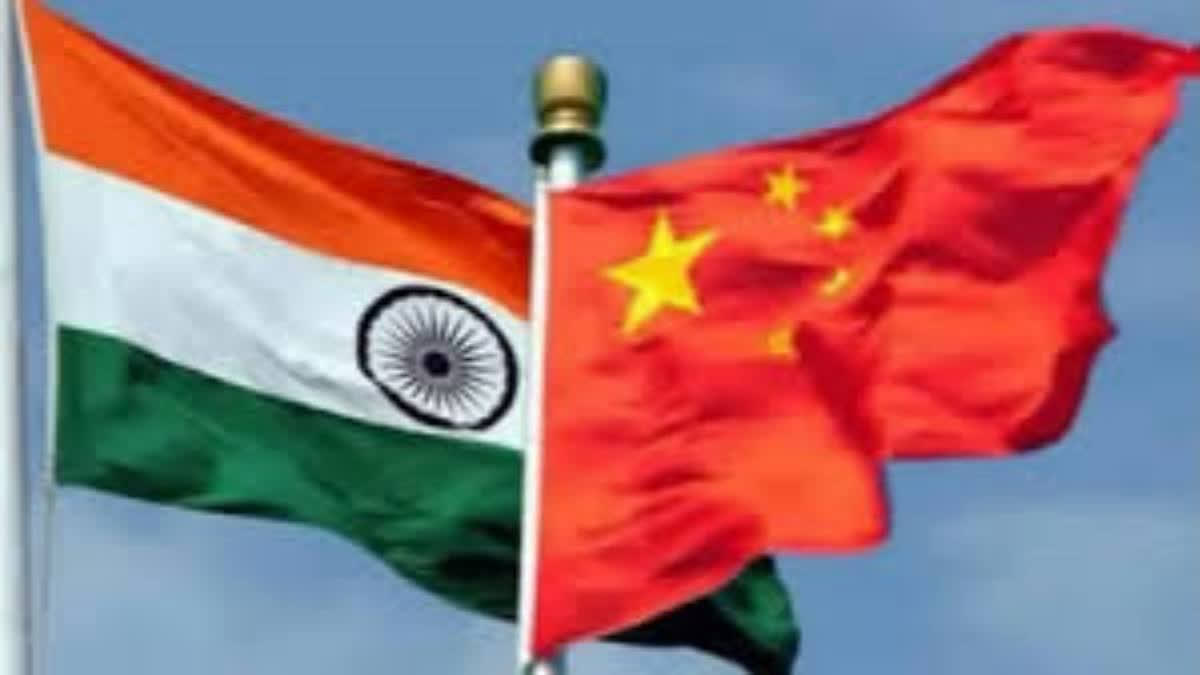New Delhi: The thaw in the relations between India and China following the resolution of the Ladakh border conflict last month is now getting reflected in Sri Lanka where the two Asian giants have been competing for strategic influence. This is evident from the fact that the Chinese envoy to Sri Lanka has welcomed new Sri Lankan President Anura Kumara Dissanayake’s upcoming visit to India next month. This will be Dissanayake’s first bilateral state visit after assuming office in September this year.
During a visit to Jaffna in Sri Lanka’s Northern Province earlier this week, Chinese Ambassador Qi Zhenghong said that China welcomes Dissanayake’s visit to India as such a move will be beneficial for Sri Lankans.
“I learned from the news that a minister has said that President Dissanayake will make his first official visit to India in the middle of December,” Qi was quoted as telling reporters at the Jaffna Press Club. “We are very glad to see this new development because India and Sri Lanka are close neighbours. And when the two countries build relations and economic cooperation, they can deliver more benefits to the people of the country.” At the same time, Qi also invited Dissanayake to visit China at a time of his convenience.
“We also welcome his excellency Dissanayake to visit China at his convenience, because we believe such a visit will also enhance our traditional friendship, promote our bilateral economic cooperation and bring many more benefits to the people,” he said.
Qi’s comments assume significance given that both India and China have been competing for geostrategic influence in the Indian Ocean island nation.
Sri Lanka is one of India's major development partners and this partnership has been an important pillar of bilateral ties between the two countries over the years. With grants alone amounting to around $570 million, the overall commitment by the Government of India is to the tune of more than $3.5 billion. Demand-driven and people-centric nature of India's development partnership with Sri Lanka has been the cornerstone of this relationship. Grant projects cut across sectors such as education, health, livelihood, housing and industrial development.
When Sri Lanka was faced with an unprecedented economic crisis in 2022, India provided around $4 billion worth of aid. India also played a crucial role in collaborating with the International Monetary Fund (IMF) and creditors to help Sri Lanka restructure its debt.
Located close to India’s southern coast, Sri Lanka is of huge geostrategic importance for India. India has been expressing concerns about China’s growing economic and strategic influence on Sri Lanka, including Chinese investments in infrastructure projects and the development of the Hambantota Port. India has been trying to keep China away from a region New Delhi sees as being under its sphere of influence.
The India-Sri Lanka rivalry also came into focus following the election of Dissanayake of the National People’s Power (NPP) alliance as President. Given that Dissanayake is the leader of the Janatha Vimukthi Peramuna (JVP), a leftist political party, that is the main component of the NPP alliance, there have been speculations about whether Colombo would now lean towards Beijing at the expense of New Delhi’s interests.
However, India has managed to keep ties with the island nation balanced despite the change of guard. In fact, last month, External Affairs Minister S Jaishankar visited Sri Lanka and held a cordial meeting with Dissanayake. In the process, Jaishankar became the first Foreign Minister from any country to meet Dissanayake after the latter assumed office.
Following Dissanayake’s victory in the presidential election, the NPP alliance won the parliamentary elections held earlier this month with a thumping majority. The NPP’s victory stretched to the Northern Province where people traditionally vote for Tamil party-backed candidates. Ambassador Qi visited the Northern Province after the results of the parliamentary elections were out.
Meanwhile, there has been a warming of ties between New Delhi and Beijing following the resolution of a four-year-old border conflict in eastern Ladakh last month. In the wake of this, Prime Minister Narendra Modi held a bilateral meeting with Chinese President Xi Jinping on the sidelines of the BRICS (Brazil, Russia, India, China, South Africa) Summit in Kazan, Russia, last month. It was the first such meeting between the two leaders in five years.
Then again, earlier this week, Jaishankar held a meeting with Chinese Foreign Minister Wang Yi on the margins of the G20 Summit in Rio de Janeiro. According to a statement issued by the External Affairs Ministry, the two leaders concurred that India-China relations have particular salience in world politics.
“EAM said that we are strongly committed to a multipolar world, including a multipolar Asia,” the Ministry stated. “Where India is concerned, its foreign policy has been principled and consistent, marked by independent thought and action. We are against unilateral approaches to establish dominance. India does not view its relationships through the prism of other nations.”
As such, Ambassador Qi’s comments welcoming Dissanayake’s upcoming visit to India can be seen from the perspective of these developments.
“The Ambassador’s comments are in line with the developments in India-China relations,” Anand Kumar, Associate Fellow at the Manohar Parrikar Institute of Defence Studies and Analyses and an expert on South Asia, told ETV Bharat. “China wants co-existence with India in Sri Lanka as Sri Lanka is India’s neighbour.”
Kumar said that Beijing wants to reduce New Delhi’s opposition to China’s influence in Sri Lanka. According to Sugeeswara Senadhira, a former Sri Lankan diplomat, who served as media advisor to four former presidents and one Prime Minister, China’s policy is not to be a competitor with India when it comes to economic relations with Sri Lanka.
“China would rather like a partnership with India in Sri Lanka,” Senadhira told ETV Bharat over the phone from Colombo. In this connection, Senadhira referred to the Special Economic Zone (SEZ) located close to the Hambantota Port that has been handed over to China on a 99-year lease by Sri Lanka as part of debt relief measures. A large part of the SEZ has been allotted to Chinese companies.
“However, China would like Indian and American companies to relocate their factories from other places like Bangladesh to the Hambantota economic zone,” Senadhira. “This will lead to the use of the Hambantota Port.” Despite this, Senadhira said that India would like to keep China’s influence in Sri Lanka’s Northern and Eastern provinces under check.
“Rather than Hambantota in the south, India would be more interested in investing in the proposed economic zone near Trincomalee port in northeastern Sri Lanka,” he stated. “The rivalry for strategic influence in Sri Lanka between India and Sri Lanka continues.”
Read more: 'Beijing Move Strategic, No Reason For India To Celebrate': Ex-Army Official On India-China Disengagement



